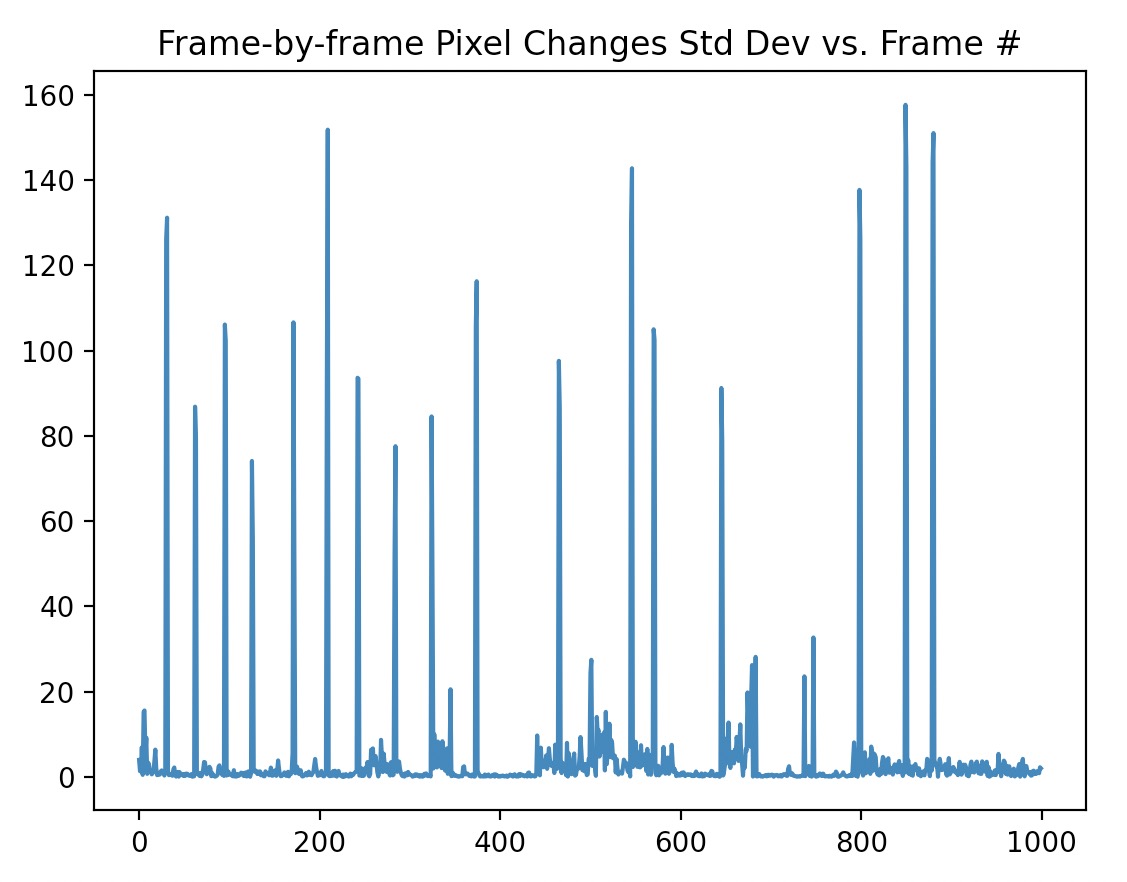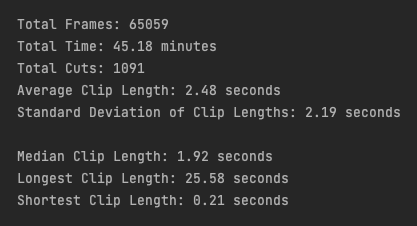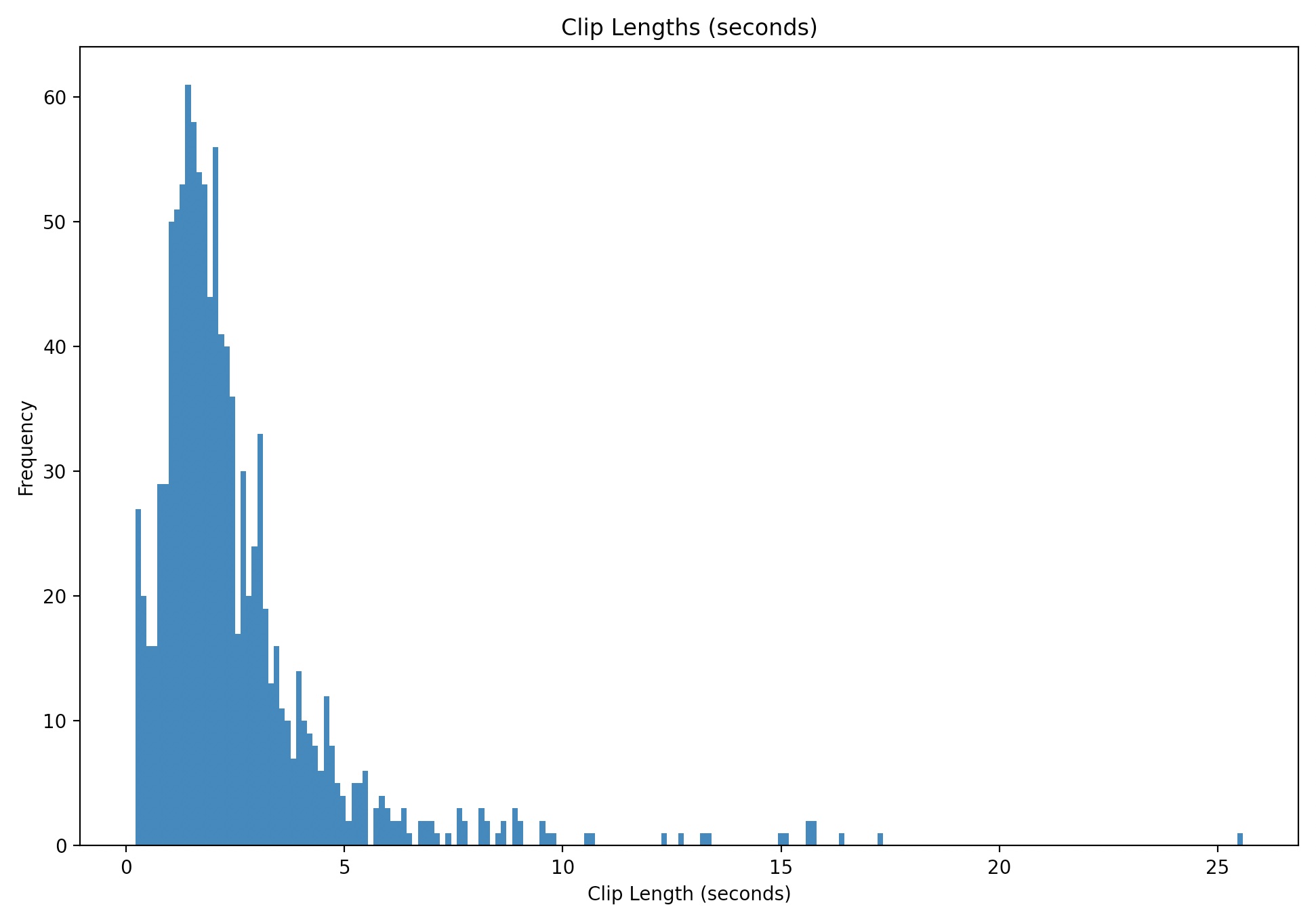Average clip duration in MILF Manor
Published June 11, 2023
Whenever I'm watching unpretentious TV like sports or reality TV, I calculate the average clip length. I get my phone stopwatch out, and enter a lap whenever a cut happens.
Do this maybe 20 times, and you usually get some idea of the distribution. Usually the cuts happen so quickly and fluidly that you may notice yourself missing a few cuts, even though every pixel on the screen dramatically changes and it seems like something you'd notice.
Recently I watched Milf Manor, a "reality" dating show where older women seeking younger men are paired with younger men seeking older women on a fancy island. The twist is that every young man is the child of one of the older women. Hilarity ensues (?).
The complicated feature I used for detecting jump cuts

Common decency aside, this show jump-cuts like nothing else. I did my stopwatch thing but didn't want to stop there — I really wanted to know all about the cut length distribution. I downloaded an episode and used the change in standard deviation of the absolute color difference of two adjacent frames. When this number crossed ~30, I called it a cut and recorded the frame number.
Then I calculated a few stats about it. Here they are:
Avg clip length is 2.48 sec, with the median at 1.92 sec

While the average clip length is 2.5 seconds, the median is only 2 seconds. I also find it interesting that the average human blink rate is 1 blink per 4-5 seconds, which means we can see around two clips between blinks. Since the average blink takes ~0.3 seconds, we also won't miss much of a clip while blinking.
Milf Manor clip duration histogram

Conclusion
The difficulty of identifying a cut in a video surprised me, but it makes sense if you consider all the possible transitions (fade to black, fade to another clip, slo-mo transition to real-time, etc.). There is even a library in Python called scenedetect which identifies these for you. Next time I will definitely use that for cut detection instead of making my own feature.
I have completely satisfied my curiousity about Milf Manor at this time.